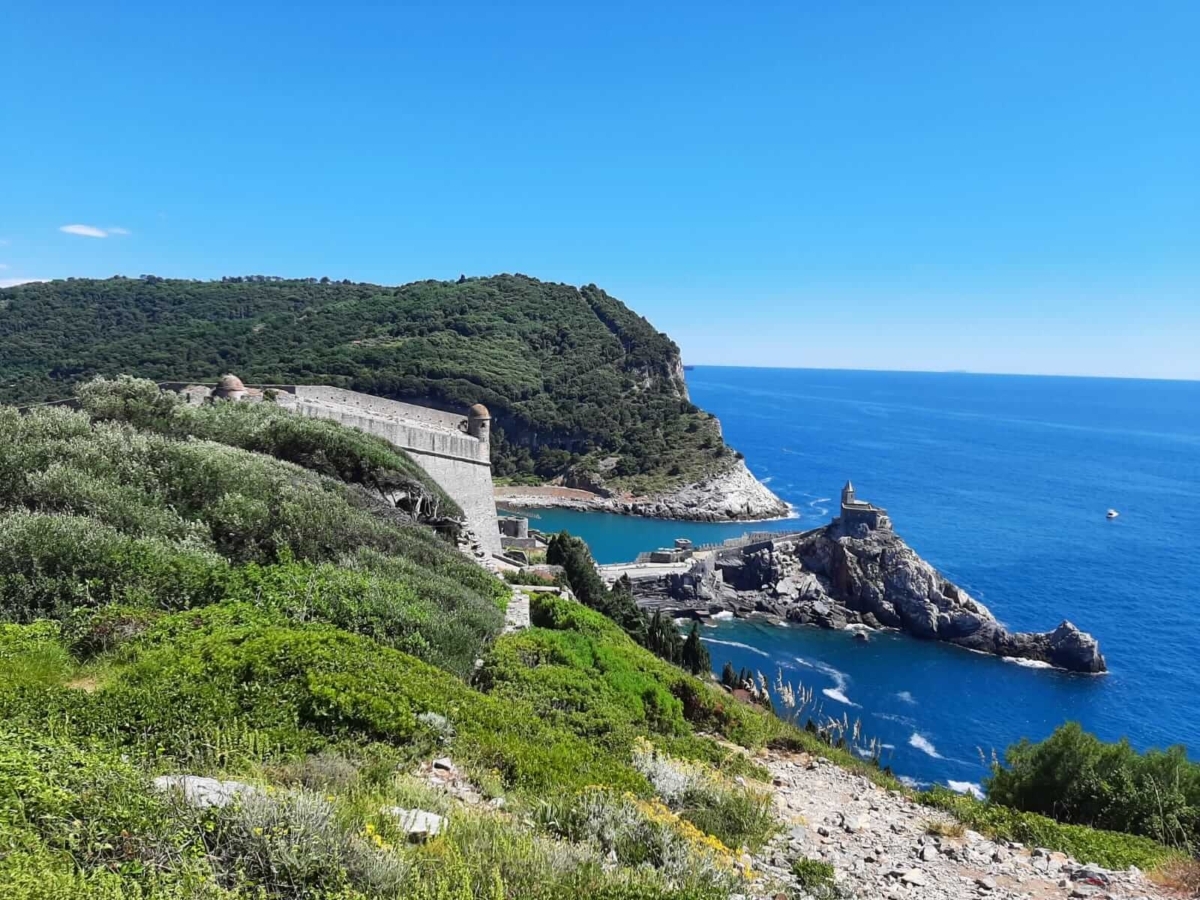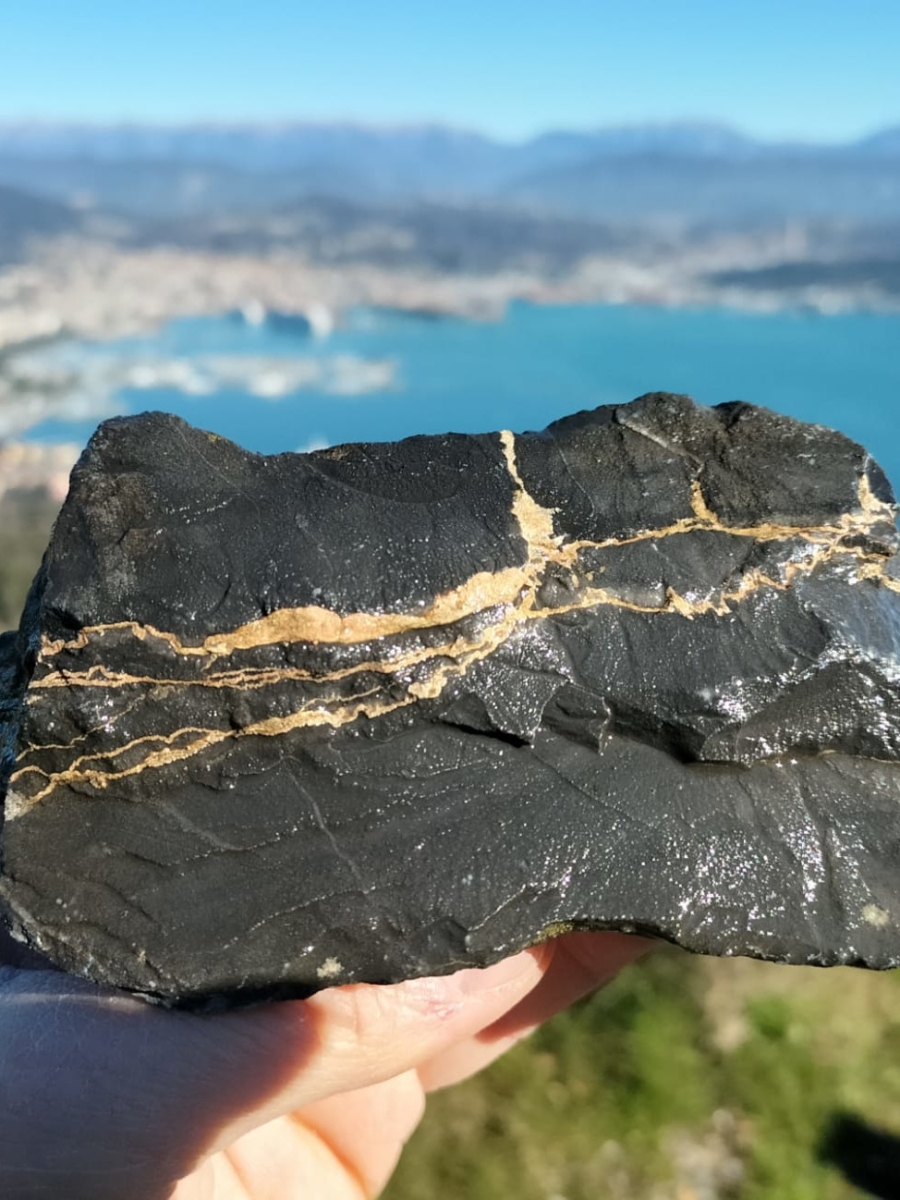Italy is famous for its “white gold”, the Marmo di Carrara: hundreds of quarries have operated in the Apuan Alps since ancient Rome. But did you know that, besides the renowned Carrara marble, there is also a prestigious and beautiful black stone called Portoro Marble or Marmo di Portovenere? It is quarried in the Gulf of La Spezia (Liguria), just a one-hour drive away from the famous quarries of Carrara (Tuscany).
Portoro Marble: history and characteristics
The Portoro is a fine-grained, black marble with gold veining resembling ripples in a stream. The appearance of this natural work of art is unique and makes the marble of Portovenere irreplaceable as an ornamental stone. Sophisticated, exclusive and elegant, today Portoro is generally used for floors, walls, vanity tops, stairs, vases, columns and paneling.

The name derives from the Italian translation of the French term Porte d’Or (golden door), which was used during the French domination in the Gulf of Poets. It was also called Jade of Portovenere.
Portoro was used since Roman times, mainly in the city of Luni. During the Middle Ages, its use was widespread in Genoa, and from the XVII century, it became prevalent in religious buildings throughout Italy. Examples of churches that feature interiors with Portoro marble include San Pietro in Vincoli, San Paolo Fuori le Mura and San Giovanni Laterano. At the end of the XIX century, Portovenere Marble gained popularity abroad, particularly in France, Belgium and Switzerland, where it embellished palaces and castles like those in Versailles, Marly and Compiegne. The Paramount Theatre in the United States also features this valuable Italian black limestone from Portovenere.
Portoro was extracted in several quarries near La Spezia, precisely on the Promontory of Portovenere and in Palmaria and Tino Islands. Documents from the XIX century report the location of thirty quarries in that area. Here is a video from the early 1930s showing a Portoro quarry in Porto Venere.
Subsequently, due to environmental constraints and depletion, quarrying activity on the islands slowly declined and ceased in the early 1980s.
Portoro Marble Tour
Throughout the centuries and up to today, Portoro has been a synonym for elegance, good taste and exclusivity.
Are you intrigued by the history and beauty of this natural black stone from Portovenere? If you want to learn more about it in an authentic and personal way, you can join the unique Portoro Marble Tour by Grand Hotel Portovenere!
This experience allows you to visit the old marble quarries while hiking in the beautiful natural landscapes of the Gulf of Poets and Palmaria Island.


One itinerary starts in Marola (near La Spezia), where beautiful uphill staircases turn into hiking paths and lead you to Monte Della Castellana, where the abandoned quarries are located. The views along this tour are gorgeous. Expert trekkers can decide to continue the hike by reaching Portovenere by foot with a demanding trail that descends towards the sea. Otherwise, you can return to Marola and then use the Grand Hotel’s transfer service back to Portovenere.
An alternative route toward the ancient quarries of Monte Della Castellana starts from the small town of Campiglia. In both cases, you will pass near an active Portoro quarry but not visit it because the access is restricted to its workers.


Another Portoro marble tour takes place on Palmaria Island, also home to abandoned, old quarries. You can visit them while exploring the island with a classic hiking tour or admire them from the sea with a boat tour around Portovenere and the islands of the Arcipelago Spezzino.
Book a marble tour between Liguria and Tuscany
Grand Hotel Portovenere offers its guests authentic experiences to explore, feel, smell and taste its wonderful territory between Liguria and Tuscany. In addition to the Portoro experience, the boutique hotel also proposes the Carrara Marble Tour in neighboring Tuscany.
The hotel’s exclusive “Between Liguria & Tuscany” Amenities Line features quality and stunning objects made with local black and white marble, including drink rocks, glass coasters, and salt and pepper shakers.

Sources:
“Portoro, the black and gold Italian marble” article in Rendiconti Lincei. Scienze Fisiche e Naturali by Fratini, F., Pecchioni, E., Cantisani, E. et al. Rend. Fis. Acc. Lincei (2015) 26: 415. https://doi.org/10.1007/s12210-015-0420-7
Perché il marmo italiano è tra i migliori al mondo https://www.marmomac.com/